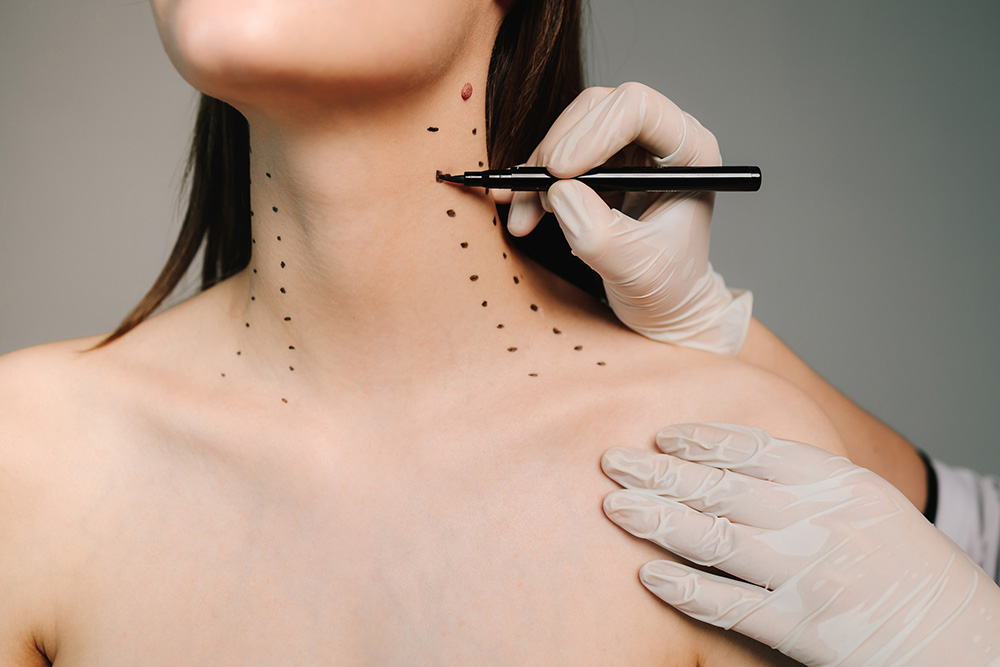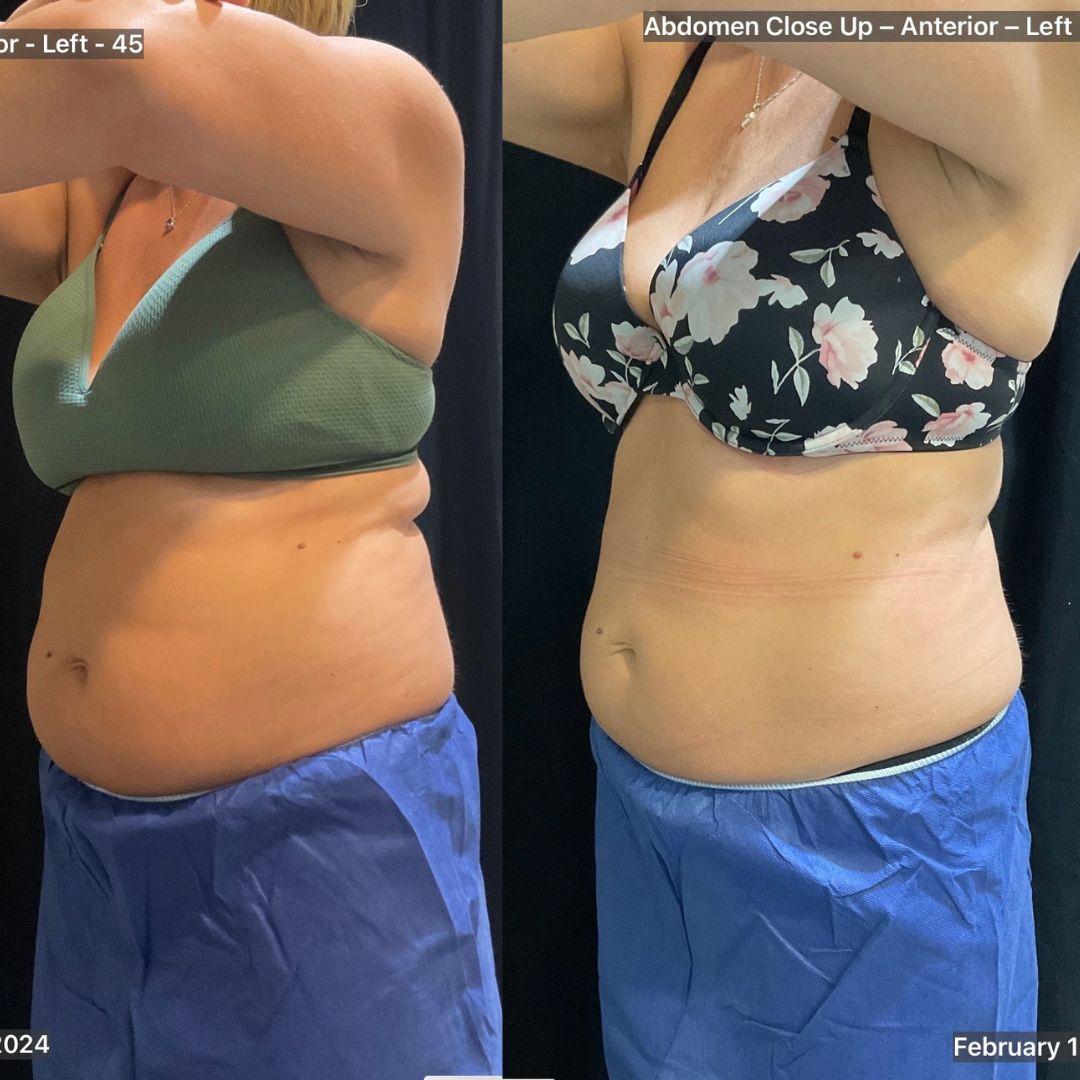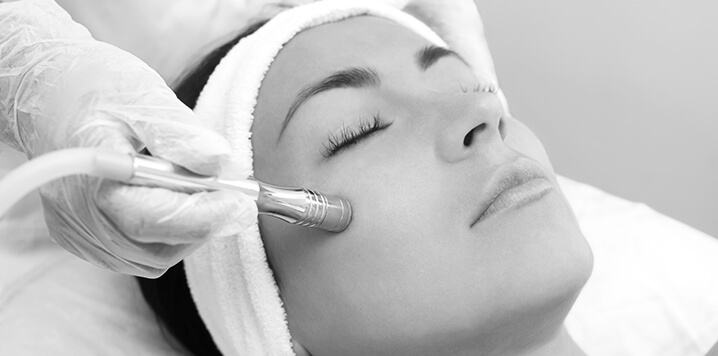BOTOX® and Fillers are two of the most common and popular cosmetic treatments on the market. Botox and fillers are both cosmetic treatments used to reduce the signs of aging. Both treatments are temporary and need to be repeated periodically to maintain their effects.
However, they work in slightly different ways.
What is BOTOX®? A quick recap.
Botox is a neurotoxin that is injected into specific muscles to paralyze them. By doing so, it can reduce the appearance of wrinkles and fine lines caused by repetitive facial movements.
BOTOX® is the most recognizable name brand of a class of cosmetic treatments that involve the use of botulinum toxin, a neurotoxin produced by the bacterium Clostridium botulinum.
When injected into specific areas of the face, botox blocks the signals from the nerves that control muscle movement, which causes the muscles to relax and smooth out wrinkles. The effects of botox typically last for three to six months, after which the treatment needs to be repeated to maintain the results. Botox is FDA-approved and quite safe.
What are fillers? Let's review.
Fillers, on the other hand, are substances that are injected beneath the skin to add volume and smooth out wrinkles and sagging areas. They are also sometimes referred to as dermal fillers.
They can be made of a variety of materials, including hyaluronic acid and collagen. Fillers can be used to plump up thin lips, enhance facial contours, and even out deep folds.
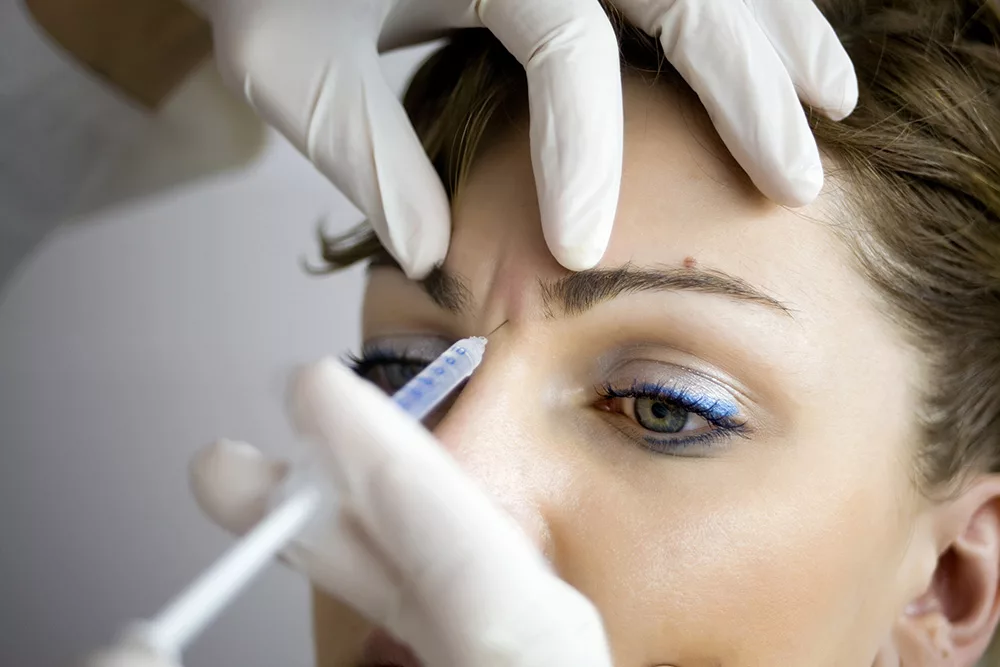
The difference between Botox and Fillers
The simplest rule of thumb to keep in mind when thinking about the differences between botox and fillers is this: BOTOX is for the upper face, starting at the corners of the eyes, (“crow’s feet”) and between the eyes.
Fillers are for the lower facial areas, from chin to cheekbones. There are quite a range of dermal fillers available, and you may want to dive deeper by exploring our guide on how to choose the right dermal fillers.
Which is more expensive: fillers or BOTOX?
Fillers are typically more expensive than BOTOX. The cost of fillers can vary depending on factors such as the type of filler used, the amount needed, and the region where the treatment is being performed. Generally, the cost of fillers can range anywhere from a few hundred to several thousand dollars per treatment session.
BOTOX, on the other hand, typically costs less than fillers. The average cost of a BOTOX treatment can range from $200 to $600 per treatment, with the cost varying depending on the area being treated and the amount of BOTOX needed.
Ultimately, the cost of fillers vs. BOTOX will depend on individual factors such as the desired outcome, the area being treated, and the experience and expertise of the provider performing the treatment.
Do fillers last longer than BOTOX?
The longevity of fillers and BOTOX® varies. Typically, fillers last anywhere from six months to two years, depending on the type of filler used and the location of the injection. Botox, on the other hand, typically lasts three to four months.
However, the longevity of both fillers and botox can vary depending on the individual and their lifestyle habit— sun exposure, smoking, and alcohol consumption can impact the longevity of both treatments. It’s always best to consult with a qualified medical professional to determine the best treatment plan and expected results.
Are fillers more risky than BOTOX?
Both fillers and Botox are safe and effective cosmetic treatments when performed by a qualified and experienced professional. However, there are some differences between them regarding risk and potential complications.
While Botox involves injecting a protein into muscles to temporarily paralyze them and reduce the appearance of wrinkles, fillers are materials injected into the skin to add volume and fill in lines.
According to experts, the risk of complications from fillers is generally higher than that of Botox, as fillers are more invasive and can cause allergic reactions, infections, and placement errors leading to lumps and bumps.
That being said, the risk of complications from either treatment is relatively low when performed by an experienced professional with a thorough understanding of facial anatomy and injection techniques. Your DermaBlue provider will discuss risks and explore your medical history thoroughly during a free aesthetic consultation before recommending either treatment.
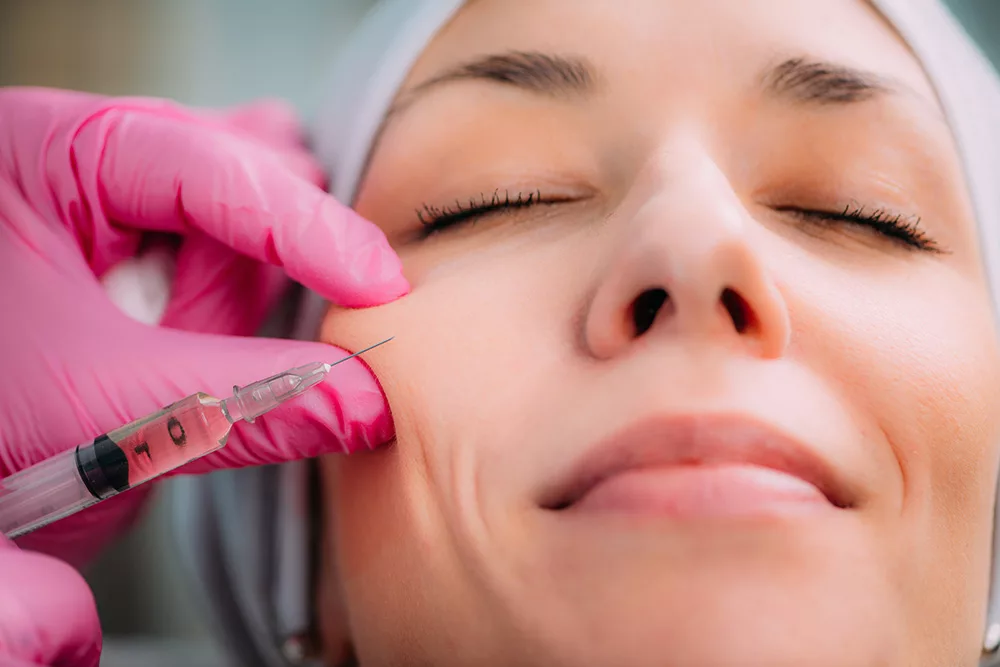
Do I need fillers or botox?
We hear this question often. As stated above, there is a rule of thumb that BOTOX is for treating upper face and fillers are for enhancing your lower face.
Both treatments can reduce wrinkles and fine lines, but BOTOX doesn’t add volume to the treatment area the way fillers do.
However, whether you end up going with BOTOX or fillers depends entirely on your aesthetic goals. You’ll want to consult a trained professional who will discuss your medical history, desired results, and ultimately tell you whether BOTOX or Fillers is right for your needs.
Schedule a free consultation at DermaBlue to learn more about BOTOX and fillers.
Frequently Asked Questions about Fillers vs BOTOX®
There is no definitive age when someone should start using Botox, as it depends on personal preferences and individual circumstances.
However, it’s generally recommended that people wait until they are at least in their mid- to late 20s before considering Botox. This is because younger skin doesn’t typically have the same fine lines and wrinkles that Botox is designed to target, and starting too early could lead to an overuse of the treatment that could result in a more artificial appearance in the future.
Many people have started getting BOTOX earlier as a preventative measure before wrinkles and severe lines set in.
Ultimately, it’s best to consult with a qualified healthcare professional to determine if and when Botox may be appropriate for each individual. Factors like one’s skin type, family history, and age can all be taken into consideration before deciding if Botox is necessary and safe.
Individuals who are pregnant, breastfeeding, or planning to become pregnant should avoid Botox and fillers as the effects on the fetus or infant are unknown. People who have allergies to any of the ingredients in these treatments or have an infection or inflammation present in the treatment area should also avoid Botox and fillers.
Additionally, those with neuromuscular disorders, blood clotting disorders, or a history of anaphylaxis should consult with their doctor before getting these treatments. Those under 18 years old should also avoid cosmetic procedures like Botox and fillers, as their bodies are still developing. You’ll need to consult with a primary care physician and a trained botox or filler expert injector before undergoing a treatment for either.
The answer to this question ultimately depends on your individual concerns and goals. Botox and fillers are both popular cosmetic treatments that can improve facial appearance in different ways. Botox works by smoothing out wrinkles and lines caused by muscle movement, while fillers can add volume and contour to areas of the face that have lost fullness over time.
If you’re concerned about dynamic wrinkles, such as those around the eyes and forehead, Botox may be the best choice for you to start with. However, if you’re more concerned about loss of volume and contour in areas like the cheeks and lips, fillers may be the better option. Keep in mind that both Botox and fillers are often used in combination to achieve the best results.
Both fillers and Botox injections are minimally invasive and non-surgical procedures. However, the level of pain experienced during the injection may vary from person to person, depending on their pain tolerance level and the sensitivity of the injected area. In general, Botox injections cause less discomfort since they are administered using very fine needles and injected directly into the muscles.
On the other hand, fillers may involve slightly larger needles to inject the dermal fillers beneath the skin surface, which can cause more discomfort. However, most doctors use numbing cream, ice packs, or local anesthesia to minimize pain and discomfort during both procedures. If you are concerned about pain or discomfort during your cosmetic injection appointment, be sure to discuss your options with your injector beforehand.
Botox and fillers can be used together, depending on your goals. If you’re interested in both treatments, your injector will be able to help you determine whether getting Botox and fillers at the same time is right for you. They will consider factors such as your age, skin type, and overall health, as well as the areas of your face you want to improve. It’s essential to choose an experienced and qualified provider, as both treatments require precision and expertise. Your provider can also guide you on aftercare and any potential side effects.



